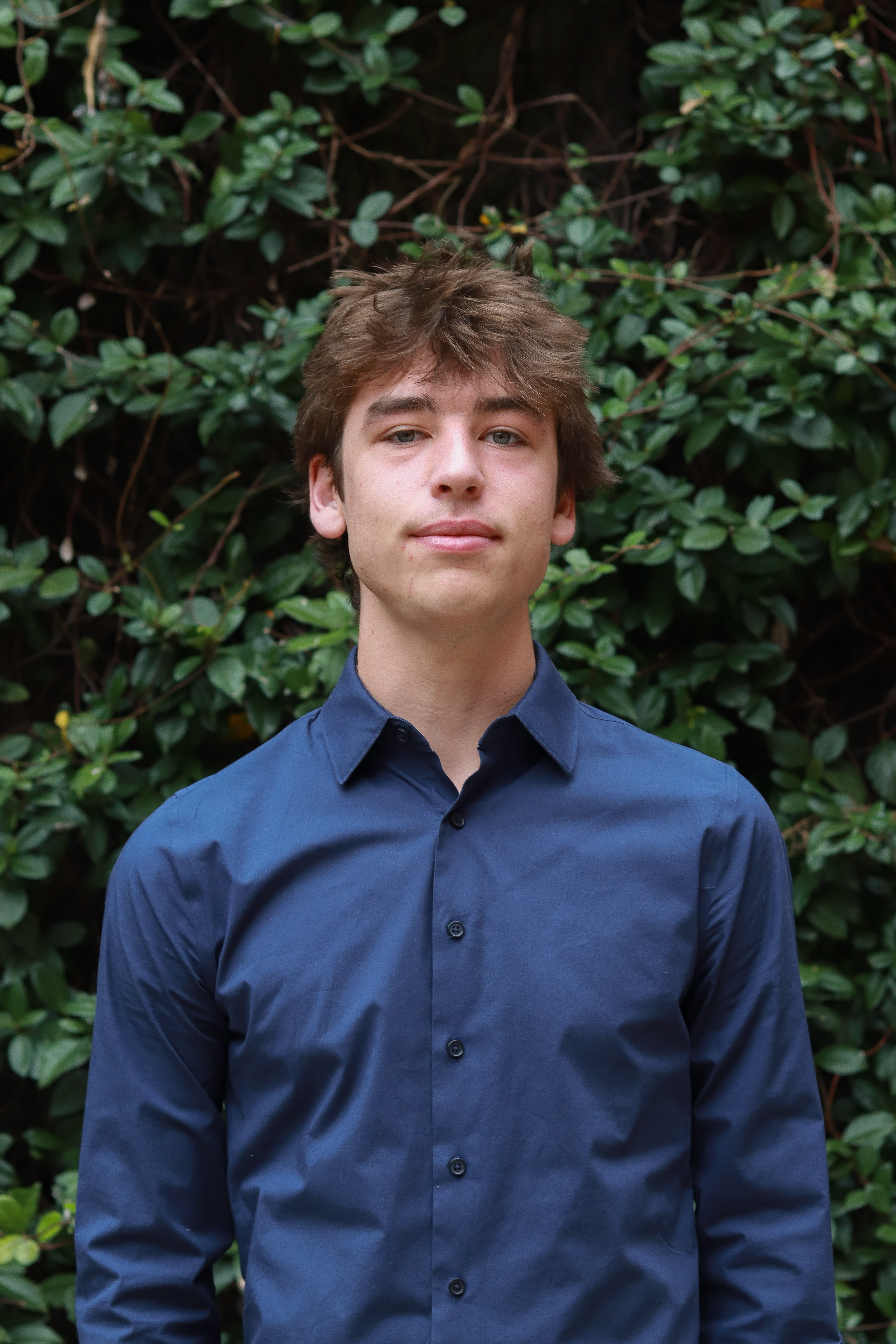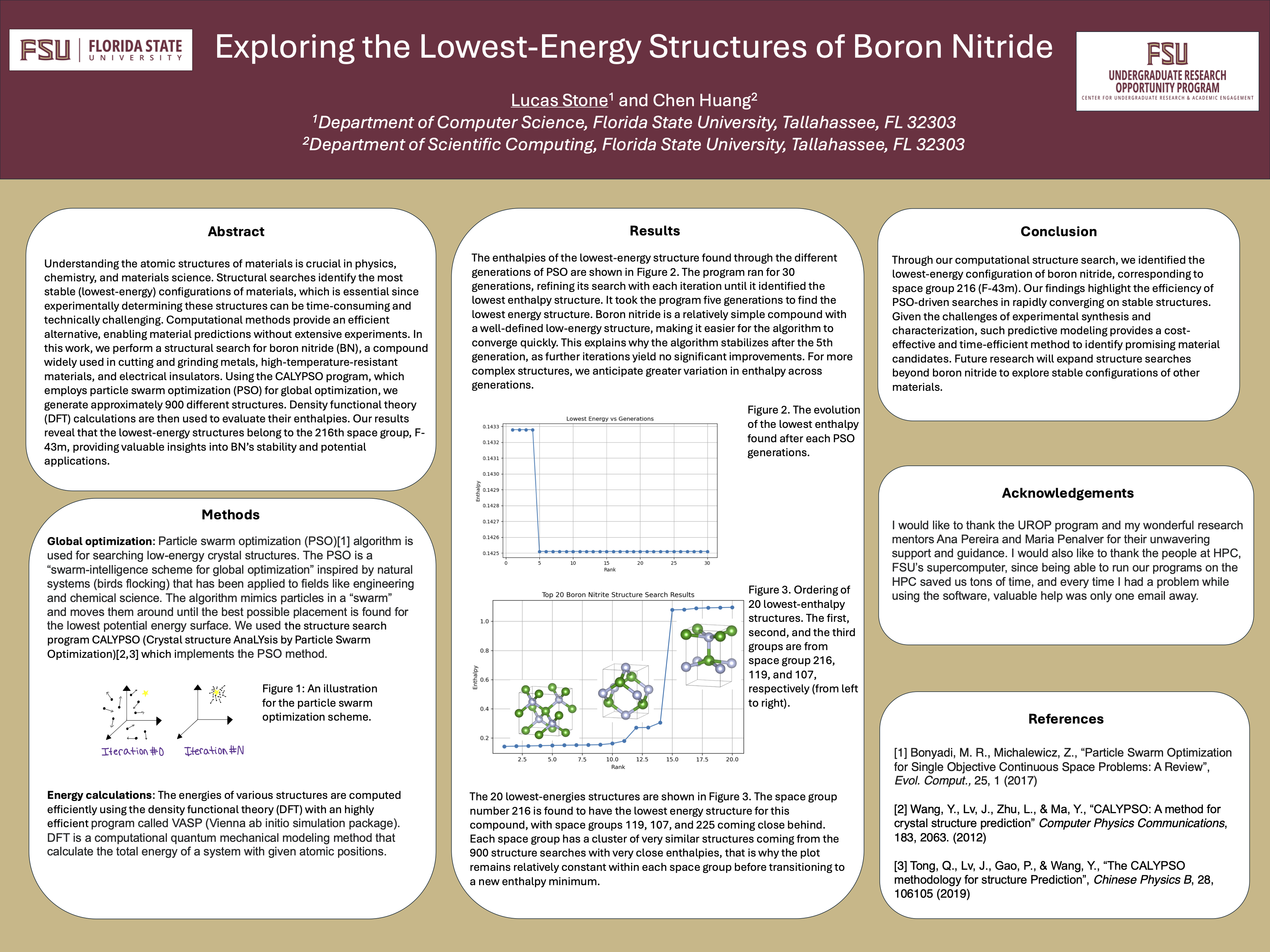Research Symposium
25th annual Undergraduate Research Symposium, April 1, 2025
Lucas Stone Poster Session 3: 1:45 pm - 2:45 pm/ Poster #165

BIO
Lucas Stone is a second-year undergraduate student from Jacksonville, FL, with a strong passion for computer science and mathematics. He aspires to pursue a career as a software engineer. Under the mentorship of Dr. Chen Huang in the Department of Scientific Computing, Lucas conducted research on computational structure searches—an approach that uses algorithms to determine the most stable configuration of a material, eliminating the need for experimental trial and error.
Exploring the Lowest-Energy Structures of Boron Nitride
Authors: Lucas Stone, Dr. Chen HuangStudent Major: Computer Science
Mentor: Dr. Chen Huang
Mentor's Department: Scientific Computing Mentor's College: Arts and Sciences Co-Presenters:
Abstract
Understanding the atomic structures of materials is crucial in physics,
chemistry, and materials science. Structural searches identify the most
stable (lowest-energy) configurations of materials, which is essential since
experimentally determining these structures can be time-consuming and
technically challenging. Computational methods provide an efficient
alternative, enabling material predictions without extensive experiments. In
this work, we perform a structural search for boron nitride (BN), a compound
widely used in cutting and grinding metals, high-temperature-resistant
materials, and electrical insulators. Using the CALYPSO program, which
employs particle swarm optimization (PSO) for global optimization, we
generate approximately 900 different structures. Density functional theory
(DFT) calculations are then used to evaluate their enthalpies. Our results
reveal that the lowest-energy structures belong to the 216th space group, F-
43m, providing valuable insights into BN’s stability and potential
applications.
Keywords: Material Science, Scientific Computing, Physics


